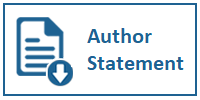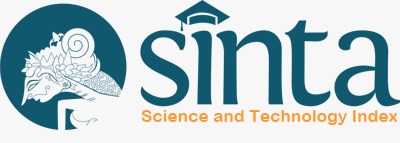Meme as a Tool for Resistance Towards Hustle Culture: A Critical Discourse Analysis
The Case Study of @ecommurz
DOI:
https://doi.org/10.31937/ultimacomm.v14i2.2706Keywords:
cultural hegemony, hustle culture, Instagram, meme, resistanceAbstract
There is currently an emergence of Indonesian meme accounts on Instagram which specifically discuss the work culture in startups or technology-based companies. One of the most popular is @ecommurz, which has roughly 152,000 followers (by 12 July 2022). Using Fairclough's critical discourse analysis, this study aims to analyze how the working class group use memes from the @ecommurz Instagram account to demonstrate a resistance to hustle culture in Indonesia, particularly in startup environments. This study shows that Ecommurz has demonstrated the potential of meme accounts as a platform that unites middle-class workers to carry out resistance to the hegemony of the dominant culture by drawing on Gramsci's (1971) conceptions of cultural hegemony and resistance. Ecommurz has democratized the discussion of issues and difficulties encountered by many middle-class workers in the workplace through humorous and casual memes. Furthermore, it has also increased public awareness of workers' rights and prompted real systemic change.
Downloads
References
Anderson, M., & Keehn, G. (2020). 'OK Boomer': Internet Memes as Consciousness Building. Radical Teacher, 118. https://doi.org/10.5195/rt.2020.746
Azalia, N.N., Yansverio, M.S,. (2021). Hari Buruh 2021: Zaman Berganti, Perjuangan Buruh Tak Akan Mati. Emancipate Indonesia. https://emancipate.id/blog/hari-buruh-2021-zaman-bergantiperjuangan-buruh-tak-akan-mati
Cloud, D. L. (2020). Critical Rhetoric| The Critique of Domination and The Critique of Freedom: A Gramscian Perspective”Commentary. International Journal of Communication, 14, 19.
Contreras Jr, L.E. (2021). Memes Against the Machine: A Rhetorical Analysis of Resistance and Parody Use in Internet Memes and Online Comments on Instagram [Master Thesis, California State University]. https://www.proquest.com/docview/2560072292?pqorigsite=gscholar&fromopenview=true
Cornet, V. P., Hall, N. K., Cafaro, F., & Brady, E. L. (2017, May). How image-based social media websites support social movements. In Proceedings of the 2017 CHI conference extended abstracts on Human Factors in Computing Systems (pp. 2473-2479).
Duile, T. (2019). Challenging Hegemony: Nurhadi-Aldo and the 2019 Election in Indonesia. Journal of Contemporary Asia, 51(4). doi.org/10.1080/00472336.2020.1748896
Ecommerce Meme Factory [@ecommurz]. (2021, 24 September. "I know y'all pretending to be busy” [Foto]. Instagram. https://www.instagram.com/p/CUMRPzZPKYR/
Ecommerce Meme Factory [@ecommurz]. (2021, 7 Oktober. "When u have an all day meeting and each meeting comes with new tasks” [Foto]. Instagram. https://www.instagram.com/p/CUttHJyPHvQ/
Ecommerce Meme Factory [@ecommurz]. (2021, 18 Oktober. "How many meetings u had so far? #MondayVibes” [Foto]. Instagram. https://www.instagram.com/p/CVKQ5ltvC6p/
Ecommerce Meme Factory [@ecommurz]. (2021, 29 Oktober. "Meme dump about most recent VIRAL story about internship (check our IG story)”. [Foto]. Instagram. https://www.instagram.com/p/CVmmBNfP6_p/
Ecommerce Meme Factory [@ecommurz]. (2021, 29 November, "#murzshop hadirkan produk yang mengerti kamu untuk mengatasi EOD akhir tahun. Terimakasih untuk kamu yang sudah mencoba produk kami.” [Foto]. Instagram. https://www.instagram.com/p/CW2U4u7v8X5/
Fairclough, N. (2001). Critical Discourse Analysis as a Method in Social Scientific Research. In R. Wodak & M. Meyer (Eds.), Methods of Critical Discourse Analysis (pp. 122-136). Sage.
Freischald, N. & Prasidya, Y. (2021, 18 Maret). Work hard, meme harder: How Indonesians are coping with startup hustle culture. The Ken. https://the-ken.com/sea/story/work-hard-meme-harder-howindonesians-are-coping-with-startup-hustle-culture/
Guba, E.(1990). The Paradigm Dialog. Sage.
Hadinata, A. (Host). (2020, Desember). Bongkar Sosok Dibalik Akun Ecommurz (No.75). [Audio podcast episode]. In Talk 2 Talk. https://open.spotify.com/episode/68XU00wcliV2NLPPjiI5bY?si=3rgQhaFGQYSFUlzLlXp8HA
Hariman, R. (2008). Political Parody and Public Culture. Quarterly Journal of Speech, 94(3), 247-272. https://doi.org/10.1080/00335630802210369
Hebdige, D. (2006). From Culture to Hegemony; Subculture: The Unnatural Break. In Media and Cultural Studies: Keyworks (Revised ed., pp. 144-162). Blackwell Publishers.
Jí¸rgensen, M. W. & Phillips, L. J. (2002). Discourse analysis as theory and method. Sage.
Katadata (2021, 28 Juli). Indonesia Kini Punya 7 Unicorn, Siapa Saja? https://databoks.katadata.co.id/datapublish/2021/07/28/indonesia-kini-punya-7-unicorn-siapa-saja
Khan, S. N. (2014). Qualitative Research Method: Grounded theory. International Journal of Business and Management, 9(11), 224-233.
Kumar, S. (2015). Contagious memes, viral videos and subversive parody: The grammar of contention on the Indian web. International Communication Gazette, 77(3), 232-247. DOI: 10.1177/1748048514568758
Li, H. (2011). Parody and Resistance on the Chinese Internet. In Online society in China: Creating, Celebrating, and Instrumentalising the Online Carnival. Routledge Books.
Miltner, K. (2018). Internet Memes. In J. Burgess, A. Marwick, & T. Poell. The Sage Handbook of Social Media, 412-428. SAGE Publications Ltd, https://www.doi.org/10.4135/9781473984066.n23
Mina, A.X. (2014). Batman, Pandaman and the Blind Man: A Case Study in Social Change Memes and Internet Censorship in China. Journal of Visual Culture, 13(3), 359-375. https://doi.org/10.1177/1470412914546576
Mullet, D. R. (2018). A General Critical Discourse Analysis Framework for Educational Research. Journal of Advanced Academics, 29(2), 116-142. doi:10.1177/1932202X18758260
Mumby, D. K. (2005). Theorizing Resistance in Organization Studies: A Dialectical Approach. Management Communication Quarterly, 19(1), 19-44. https://doi.org/10.1177/0893318905276558
Neuman, W.L. (2014). Social Research Methods: Qualitative and Quantitative Approaches, 7th Edition. Pearson.
Pettis, B. T. (2018). PEPE THE FROG: A Case Study of the Internet Meme and its Potential Subversive Power to Challenge Cultural Hegemonies [Doctoral dissertation, University of Oregon]. https://scholarsbank.uoregon.edu/xmlui/handle/1794/2406
Rahardi, H. R., & Amalia, R. M. (2019). Meme as Political Criticism Towards 2019 Indonesian General Election: A Critical Discourse Analysis. Studies in English Language and Education, 6(2), 239-250.
Shifman, L. (2013a). Memes in a Digital World: Reconciling with a Conceptual Troublemaker. Journal of Computer-Mediated Communication, 18(3), 362–377. doi:10.1111/jcc4.12013
Shifman, L. (2013b). Memes in digital culture. Cambridge, MA: MIT Press.
The Finery Report. (2021, 26 Februari). Hustle culture and the burnout generation. https://www.thefineryreport.com/articles/2021/2/25/hustle-culture-and-the-burnout-generation.
van Leeuwen, T. (2001). Semiotics and iconography. In T. van Leeuwen & C. Jewitt (Eds.), Handbook of visual analysis (pp. 92–118). Sage.
Wiggins, B. E. (2019). The Discursive Power of Memes in Digital Culture: Ideology, Semiotics, and Intertextuality. Routledge.
Willig, C. (2014). Discourses and Discourse Analysis. In U. Flick (Ed.), The Sage Handbook of Qualitative Data Analysis (pp. 341-351). Sage.
Wodak, R., & Meyer, M. (2009). Methods for Critical Discourse Analysis. Sage.
Yoon, I. (2016). Why is it not just a joke? Analysis of Internet memes associated with racism and hidden ideology of colorblindness. Journal of Cultural Research in Art Education, 33, 92-123.
Downloads
Published
How to Cite
Issue
Section
License
Ultimacomm Jurnal Ilmu Komunikasi allows readers to read, download, copy, distribute, print, search, or link to its articles' full texts and allows readers to use them for any other lawful purpose. The journal allows the author(s) to hold the copyright without restrictions. Finally, the journal allows the author(s) to retain publishing rights without restrictions
1. Authors are allowed to archive their submitted article in an open access repository
2. Authors are allowed to archive the final published article in an open access repository with an acknowledgment of its initial publication in this journal














